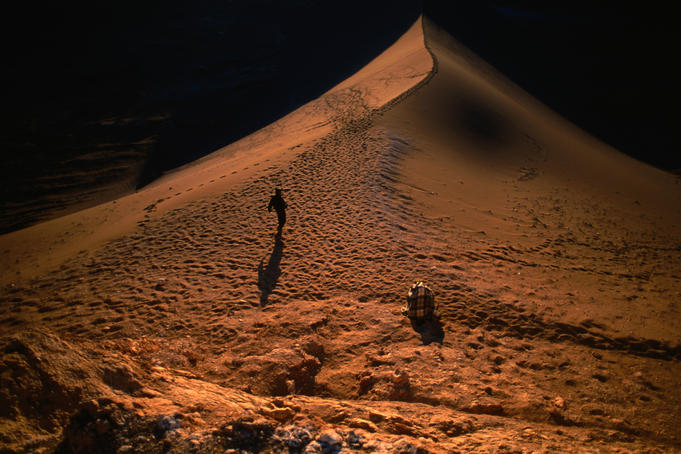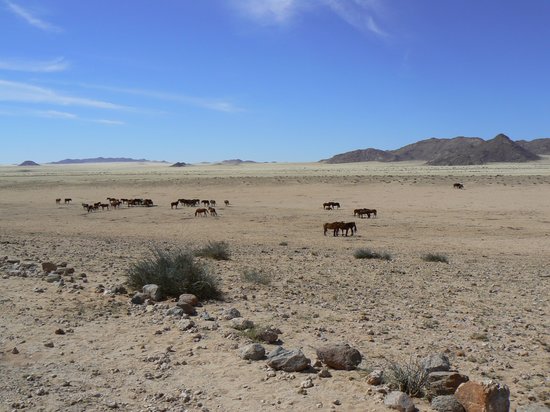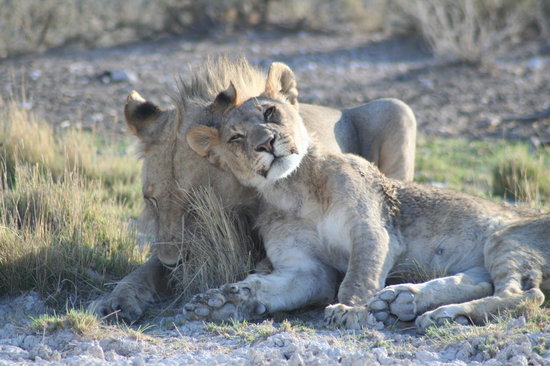The Epupa Falls are created by the Kunene River on the border of Angola and Namibia, in the Kaokoland area of the Kunene Region.
The name "Epupa" is a Herero word for "foam", in reference to the foam created by the falling water.
Despite being difficult to reach (a 4X4 vehicle is needed to reach them from Opuwo), the falls are a major visitor attraction in Namibia, because of the largely unspoiled environment, with fig trees, baobabs, makalani palms and colored rock walls framing the falls.
The Epupa Constituency is named for the falls.

Questa foto di Epupa Falls Lodge è offerta da TripAdvisor.

















































